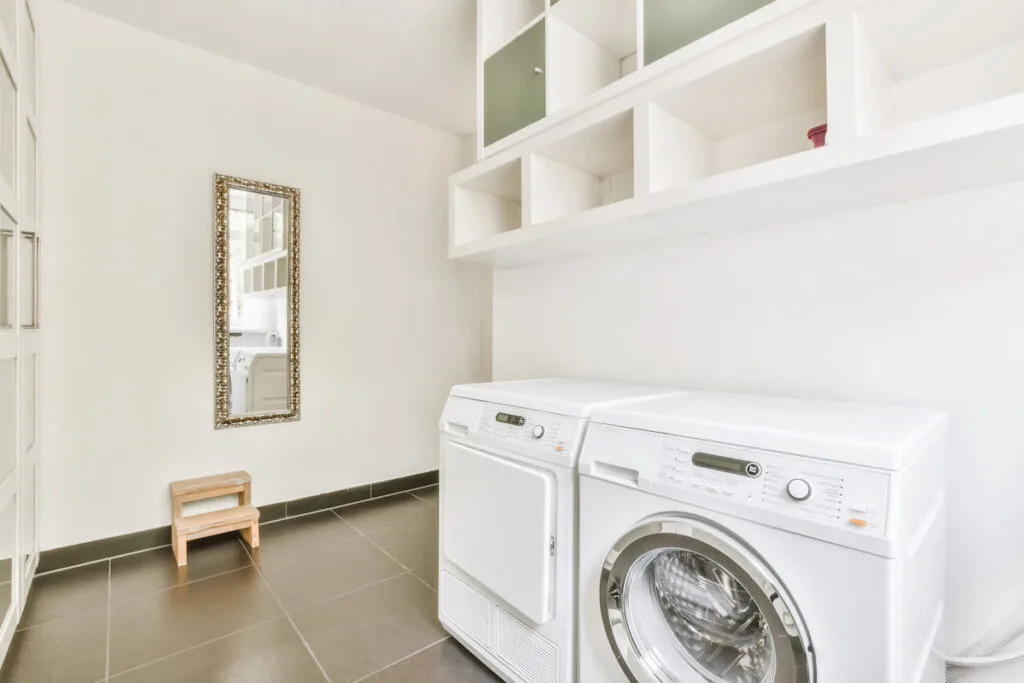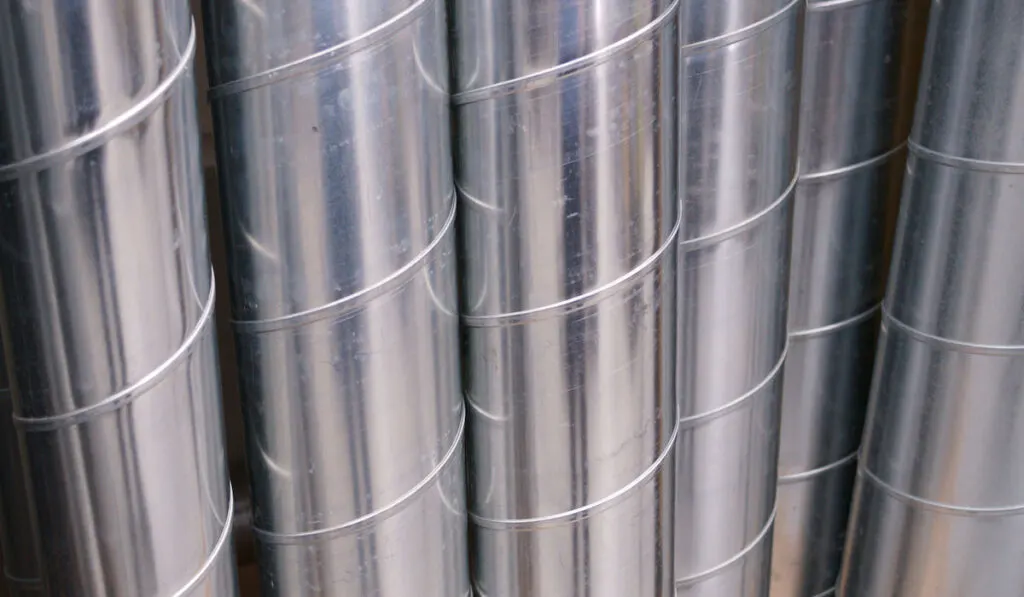*This post may have affiliate links, which means I may receive commissions if you choose to purchase through links I provide (at no extra cost to you). As an Amazon Associate, I earn from qualifying purchases. Please read my disclaimer for additional details.
Two of the great conveniences in many homes are laundry appliances—a washer and dryer. Washing machines require water and are connected with hoses, and dryers require ventilation to the outside through a vent hose.
Do dryers come with a vent hose?
Modern dryers typically don’t include vent hoses. This happens for various reasons, but most likely because it would increase the size of the packaging, and there is no standard vent hose size that fits all homes.
If you ever buy a new dryer, you’ll also need to purchase a vent hose to reach your dryer vent. Getting dryer ventilation correct is necessary because it reduces the risk of fire and ensures reliable performance from your appliance.

In most cases, you should put your dryer close to where the vent is since you will only need a short vent hose to secure proper ventilation. However, some houses are different, so you may need a longer vent hose to reach the vent.
Don’t expect your dryer and the company that made it to know how long the distance from the dryer exhaust to your vent is. If you’re worried about buying and attaching the vent hose by yourself, you can hire a professional to hook it up without too much trouble.
Here’s what you need to know about vent hoses and how to properly take care of your dryer vent.

Table of Contents
Do Dryers Come with Vent Hoses?
Modern dryers typically don’t include vent hoses. This happens for various reasons, but likely because it would increase the size of the packaging, and there is no standard vent hose size that fits all homes.
The dryer configuration is different for every home. Some dryers are in the basement, and some homes have laundry rooms on the top level next to the bedrooms. It all depends on who designed and built your house.
Some dryers are positioned as closely as possible to the outdoor dryer vent. In other houses, you’ll need a vent hose that is several feet long to ventilate the hot, moist air outside.
Whatever the case may be, you’ll need to measure the distance and buy an appropriate length of vent hose online or at your local home improvement store.
Dryer vent hoses are affordable and easy to manipulate. You can always buy an extra foot or two of the hose and cut it down to size when you install it.
This will spare you from having to go back to the store if you make any mistakes on the first try.

What Happens if You Use a Dryer Without a Vent Hose?
Using the dryer without a vent hose is fine, as long as you have some other type of connection between your dryer’s exhaust and the vent. For example, some people use thin PVC pipes for more solid ventilation.
However, using the dryer without any ventilation isn’t the best idea. If you run the dryer and it’s not connected to an outdoor vent, your laundry room will get extremely hot, to the point where it’s uncomfortable to be in the room when the dryer is running.
You’ll also likely blow a lot of lint and dust around your laundry room. In addition to ventilating air, dryer vent hoses and vents carry a good amount of dust and debris in them.
That’s why you typically need to get your dryer vent cleaned every so often.
Dryers are powerful appliances that generate a lot of heat. You need somewhere for all of that hot air to go. While you can certainly run the dryer without the vent hose, it’s not a great option.

How Important Is a Vent Hose?
A vent hose that is installed properly is very important to the long-term performance of your dryer. However, an improperly installed vent hose can increase the risk of fire in your house if enough lint builds up.
A clogged dryer vent hose can combust if things get hot enough. It can also stop your clothes from drying because there is nowhere for the hot air to escape.
Modern dryers have built-in safety mechanisms that turn off the dryer when things get too hot inside. If there’s nowhere for the hot air to escape, your dryer may stop working as a safety precaution.
3 Vent Hose Options
Looking for the best dryer vent hose options? Here are three great choices.
Aluminum Foil Duct

This is the most common type of vent hose. People love it because it does the job and is quite easy to twist and position to fit tight spaces.
Rigid Metal Ducts

These are harder to install, but they usually last a lot longer than foil hoses.
Plastic Hoses

Plastic hoses are similar to aluminum foil ducts in that they bend and twist to fit almost any shape. They’re usually white and are a viable choice for people who want a certain color or are worried about aluminum scratching the floor.
